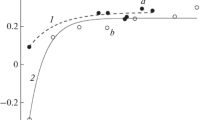Abstract
Studies were carried out to ascertain the role of sympatho-parasympathetic responses in the process of adaptation to altitude. The assessment of status of autonomic balance was carried out in a group of 20 young male subjects by recording their resting heart rate, blood pressure, oral temperature, mean skin temperature, extremity temperatures, pupillary diameter, cold pressor response, oxygen consumption, cardioacceleration during orthostasis and urinary excretion of catecholamines; in a thermoneutral laboratory. The same parameters were repeated on day 3 and at weekly intervals for a period of 3 weeks, after exposing them to 3,500 m; and also after return to sea level. At altitude, similar studies were carried out in a group of 10 acclimatized lowlanders, 10 high altitude natives and 6 patients who had recently recovered from high altitude pulmonary oedema. In another phase, similar studies were done in two groups of subjects, one representing 15 subjects who had stayed at altitude (3,500–4,000 m) without any ill effects and the other comprising of 10 subjects who had either suffered from high altitude pulmonary oedema (HAPO) or acute mountain sickness (AMS). The results revealed sympathetic overactivity on acute induction to altitude which showed gradual recovery on prolonged stay, the high altitude natives had preponderance to parasympathetic system. Sympathetic preponderance may not be an essential etiological factor for the causation of maladaptation syndromes.
Similar content being viewed by others
References
CANNON, W. B. (1929): Organisation for physiological homeostatis. Physiol. Rev., 9: 399.
CUNNINGHAM, W. L., BECKER, E. J. and KRENZOR, F. (1965): Catecholamine in plasma and urine at high altitude. J. appl. Physiol., 20: 607–610.
ELSNER, R. W., ANDERSEN, K. L. and HERMANSEN, I. (1960): Thermal and metabolic responses of arctic Indians to moderate cold exposure at the end of winter. J. appl. Physiol., 15: 659–661.
ELSNER, R. W., BOLSTAD, A. and FORNO, E. (1964): In: The Physiological Effects of High Altitude. H. Weihe (ed). Pergamon Press. Oxford, 217–221.
HOON, R. S., SHARMA, S. C., BALSUBRAMANIAM, V. and CHADHA, S. K. (1977): Urinary catecholamine excretion on induction to high altitude (3,658 m) by air and road. J. appl. Physiol., 42: 728–730.
KEYS, A., STAPP, J. P. and VIOLANTE, A. (1943): Responses in size, output and efficiency of the human heart to acute alteration in the composition of inspired air. Amer. J. Physiol., 138: 763–771.
KLAUSEN, K. (1966): Cardiac output in man at rest and work during and after adapting to 3,800 m. J. appl. Physiol., 21: 609–616.
LAHIRI, S. (1977): Physiological responses and adaptations to high altitude. In: Environmental Physiology. Vol. 15. D. Robertshaw, (ed). University Park Press, London, 217–251.
LeBLANC, J. (1975): Man in the Cold. Charles C. Thomas, Springfield, Ill.
MALHOTRA, M. S. and MATHEW, L. (1974): Effect of prolonged stay at altitude (4,000 m) on autonomic balance. Aerospace Med., 45: 869–872.
MALHOTRA, M. S., SELVAMURTHY, W., PURKAYASTHA, S. S., MUKHERJEE, A. K., MATHEW, L. and DUA, G. L. (1976): Responses of the autonomic nervous system during acclimatization to high altitude in man. Aviat. Space. Environ. Med., 47: 1076–1079.
MATHER, J. T., MANCHANDA, S. C., CYMERMAN, A., WOLFF, D. L. and HARTLEY, L. H. (1975): Cardiovascular responsiveness to adrenergic stimulation and blockade in chronic hypoxia. Amer. J. Physiol., 228: 477–481.
MATHEW, L., PURKAYASTHA, S. S., JAYASHANKAR, A. and SHARMA, R. P. (1979): Responses of high altitude natives to a standard cold test at sea level. Aviat. Space. Environ. Med., 50: 372–375.
NAHAS, G. G., VISSCHER, M. B., MATHER, O. W., HADDY, F. J. and WARNER, H. R. (1954): Influence of hypoxia on the pulmonary circulation of non-narcotized dogs. J. appl. Physiol., 6: 467–476.
NAIR, C. S., MALHOTRA, M. S., TIWARI, O. P. and GOPINATH, P. M. (1971): Effect of altitude acclimatization on cold pressor response in man. Aerospace Med., 42: 991–994.
PACE, N., GRISWOLD, R. L. and GRUMBAUM, B. W. (1964): Increase in urinary norepinephrine excretion during 14 days sojourn at 3,800 m elevation. (Abstract); Fed. Proc., 23: 521.
QUECK, E. S. C., BULTERY, J. E. and De WITT, G. F. (1976): Determination of adrenaline and noradrenaline in urine by the combined alumina tryhydroxy indole method. In: Practical Clinical Biochemistry. Varley. Gowenlock and W. H. Bell, (ed). Medical Books, London, 201–202.
RAI, L. and CHHINA, G. S. (1976): Measurement of autonomic balance: A preliminary study. Proceedings of XXII Annual Conference of APPI. Agra. p. 67.
SHARMA, S. C., BALSUBRAMANIAM, V., MATHEW, O. P. and HOON, R. S. (1977): Serial studies of heart rate, blood pressure and urinary catecholamines excretion on induction to high altitude. Ind. J. Chest. Dis., 19: 16–20.
SURKS, M. I., BECHWITT, H. J. and CHIDSEY, C. A. (1967): Changes in plasma thyroxine concentration metabolism catecholamine excretion and basal oxygen consumption in man during exposure to high altitude. J. clin. Endocrin. Metab., 27: 787–799.
VAN LIERE, E. J. and STICKNEY, J. C. (1963): Hypoxia, University of Chicago Press. Chicago.
VOGEL, J. A., HANSEN, J. E. and HARRIS, C. W. (1967): Cardio vascular responses in man during exhaustive work at sea level and high altitude. J. appl. Physiol., 23: 531–539.
VOGEL, J. A., HARTLEY, L. H., CRUZ, J. C. and HOGAN, R. P. (1974): Cardiac output during exercise in sea level residents at sea level and high altitude. J. appl. Physiol., 36: 169–172.
WEINER, J. S. and LOURIE, J. A. (1969): In: Human Biology. IBP. Handbook. No. 9. Blackwell Scientific Publications. London and Edinburgh, 343–349.
WOODS, E. F. and RICHARDSON, J. A. (1959): Effects of acute anoxia on cardiac contractility. Amer. J. Physiol., 196: 203–206.
Author information
Authors and Affiliations
Rights and permissions
About this article
Cite this article
Mathew, L., Purkayastha, S.S., Jayashankar, A. et al. Responses of the autonomic nervous system in altitude adapted and high altitude pulmonary oedema subjects. Int J Biometeorol 29, 131–143 (1985). https://doi.org/10.1007/BF02189033
Received:
Issue Date:
DOI: https://doi.org/10.1007/BF02189033




